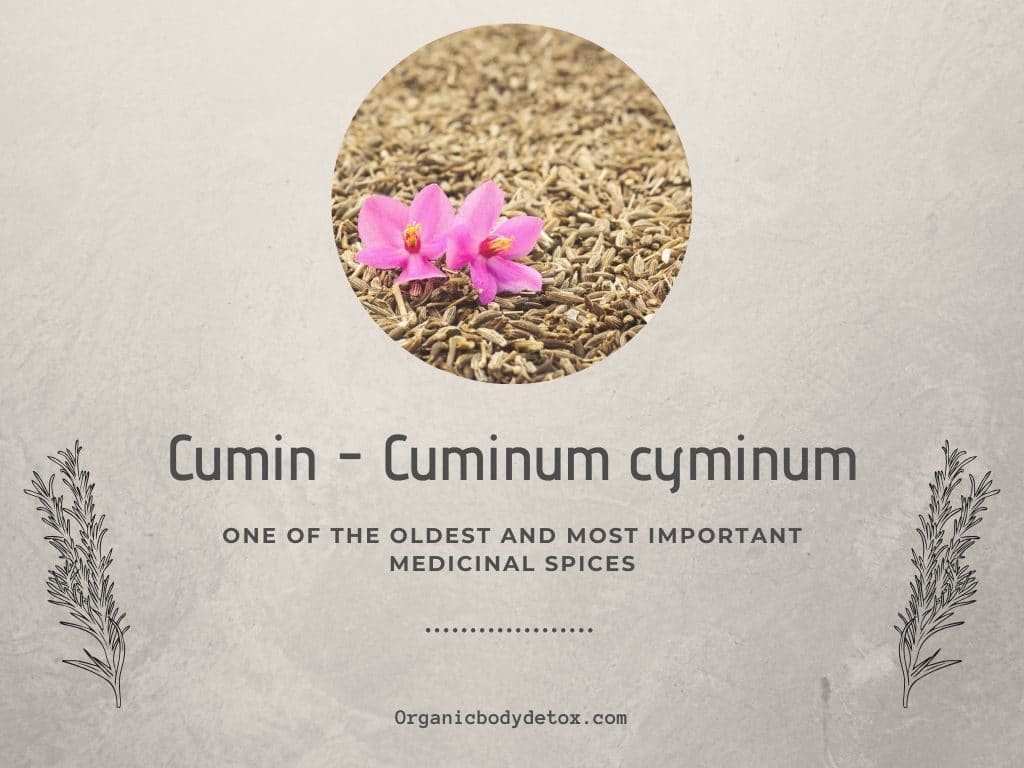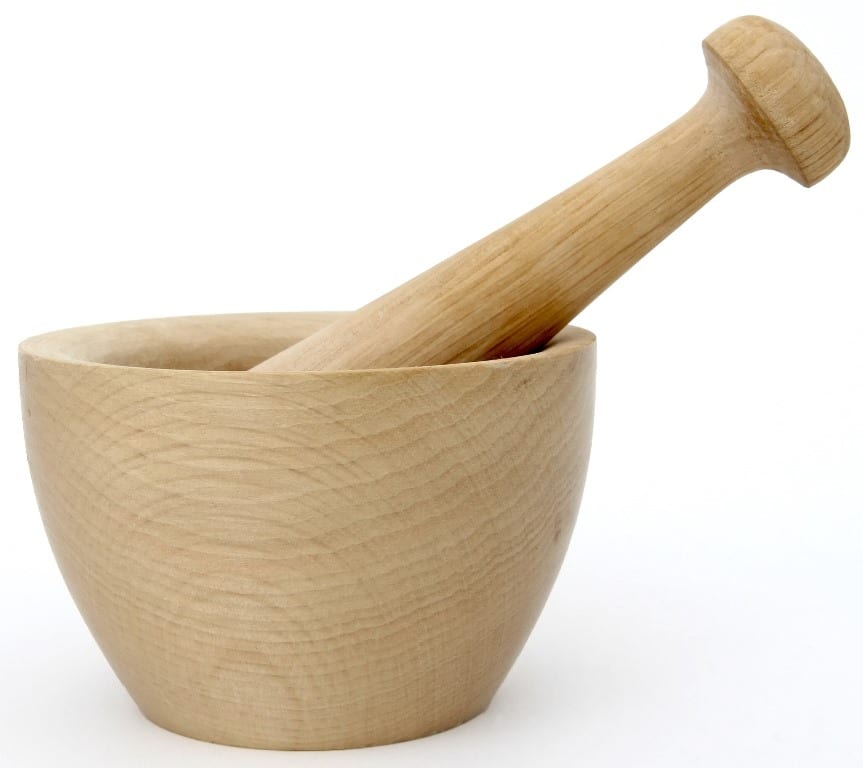Cumin is much more than just a spice
If there is a spice that is as much used as a condiment as a remedy, especially in Ayurvedic medicine, traditional Indian medicine, it is indeed cumin! The seed is found in many pharmacopeias and traditional medicines around the world as it has many medicinal virtues. Let’s discover together the health benefits of cumin, how to make cumin powder and how to use it to relieve everyday ailments.

What is the composition of cumin?
In summary, 100 g of cumin is:
- Water: 8.08 g
- Carbohydrates: 33.7 g
- Fat: 22.3 g
- Protein: 17.8 g
- Calcium: 934 mg
- Iron: 66.4 mg
- Magnesium: 366 mg
- Manganese: 3.33 mg
- Phosphorus: 499 mg
- Beta carotene: 762 ?g
- Energy: 427 kcal (1780 kJ)
Cumin, the seed of the Cuminum cyminum plant, is exceptional in its content of the following nutritional ingredients
Iron: essential, among other things, for the transport of oxygen in the body.
Magnesium: essential, among other things, to the proper functioning of the digestive system.
Phosphorus: essential, among other things, for the proper functioning of nerve cells and good muscular and cerebral dynamism.
Beta carotenes: antioxidants, they help fight against cellular aging.
And also: flavonoids, tannins, mucilages, vitamins B1, B2, B6, B9 (folic acid), PP, C, K, etc.
Related: Black cumin health benefits
Health benefits of cumin powder
In summary, cumin is anti-inflammatory, analgesic, antispasmodic and antipyretic. It is used to relieve difficult digestion, stomach pains, and spasms, menstrual pain, gastritis, rheumatic inflammation, hepatitis, and fever.

- Manages digestive problems: Cumin is an effective spice that has been studied for their possible roles in managing and preventing most problems associated with digestion, as well as foodborne infections. Its consumption is recommended in case of difficult digestion, flatulence, colic, diarrhea, constipation, abdominal and stomach pains. The spice has carminative and antispasmodic properties, that is to say, it will help relieve upset stomach, bloating, and generally the spasms of the digestive tract. For example, people who get digestion problems after eating cabbage or legumes should try adding a teaspoon of cumin seeds into the cooking water, it’s effective. It increases the release of digestive proteins in the mouth, stomach, and small intestine, making digestion more effective, as well as increasing the release of liver bile, which helps in the digestion of fats and certain nutrients in the body. A study of 57 patients with irritable bowel syndrome (IBS) showed that taking cumin daily for 2 weeks resulted in improved symptoms. Excellent diuretic, cumin stimulates the proper urinary elimination and helps to cleanse the renal system, usually as an infusion. It stimulates the production of intestinal enzymes and promotes the assimilation of nutrients and minerals.
- Preventing high cholesterol problems: Many studies have shown the anti-cholesterol virtues of cumin. In each case, the group taking cumin saw an improvement in cholesterol levels compared to the group taking a placebo. A study in which the first group twice daily took 75 mg of cumin for eight weeks showed a significant decrease in triglycerides. Another study with 1 g of cumin daily for 6 weeks showed a decrease of LDL cholesterol (“bad” cholesterol) by almost 10%. A study with 88 women, half of whom took 3 g of cumin with yogurt twice a day for 3 months, had higher levels of HDL (“good”) cholesterol than the group taking a placebo.
- Improves diabetes symptoms: A clinical trial was conducted with adults suffering from type 2 diabetes, studying the effects of cumin oil on blood sugar levels. The first group of study participants received 100 milligrams (mg) of cumin oil once a day, the second group received 50 mg of cumin oil daily, and the third group received a placebo. After 2 months of research, both groups who consumed cumin oil had significantly lower blood sugar, insulin, and hemoglobin A1c levels. In the groups where the participants consumed cumin oil, insulin resistance and inflammation symptoms also improved. A study done in India found that feeding rats with diabetes with cumin powder slowed the progression of cataract, a very common eye disease in diabetics caused by hyperglycemia.
- Stimulating effect on lactation: Cumin is a galactagogue spice that stimulates the production of breast milk. For this reason, it is often associated with fennel and caraway and then consumed in the form of herbal tea.
- Action against anemia: A teaspoon of powdered cumin contains on average 1.4 mg of iron, which corresponds to more than 17.5% of the recommended daily intake (RDA) of iron for an adult. There are few foods as rich in iron as cumin, which makes it a good source, even in the minimal amounts used to flavor dishes.
- Protective effect on bones: Cumin is rich in phytoestrogens, and researchers have shown that these compounds help to fix calcium in bones. In a study conducted on animals with osteoporosis in India, researchers saw greater bone density in groups taking cumin than others. The effect of cumin is expected to be as effective as that of estradiol (Estrace), a former preventive drug for osteoporosis withdrawn from the market as it increases the risk of diseases and breast cancer.
- Normalizes the menstrual cycle: Cumin facilitates menstruation, thanks to its emmenagogue properties that promote blood circulation in the uterus.
- Anti-inflammatory action: Cumin has anti-inflammatory properties to inhibit inflammation, including rheumatism. It could, therefore, be useful in the treatment of inflammatory diseases.
- Anti-aging and general health action: Cumin is a spice with a very high content of antioxidants: vitamin C, A, polyphenols, terpenes, flavonoids, alkaloids, etc. Its ORAC index, which measures antioxidant content, is 75,000. For comparison, cranberries, which are known to contain a lot of antioxidants, have an ORAC index of 9,584. Antioxidants help slow down the oxidative stress that causes premature aging of cells and accelerates the aging of the body, resulting in all kinds of diseases related to aging, such as cancer. Beyond the antioxidants, cumin contains thymoquinone, a substance that, according to animal studies, reduces the risk of cancer, particularly of the colon, breast, lung, and cervix.
- Against colds: To help cure a cold, you can use cumin as it has antiseptic and antiviral properties. It is an excellent remedy that acts as a disinfectant and helps fight viral infections that cause colds.
- Slimming action: It is a very effective slimming spice. Powerful antioxidants in cumin stimulate metabolism and help melt fat faster. Just a pinch of cumin every day is enough to accelerate weight loss.
Other benefits of cumin
According to some studies, cumin has a preventive effect on the appearance of cancers, particularly cancer of the stomach and liver. It is attributed to a protective action of the cardiovascular system.
It is also attributed to aphrodisiac virtues, especially among Arabs who prepared a mixture of cumin, pepper, and honey to stimulate the libido.
Some studies have shown that cumin components can reduce addictive behavior and withdrawal symptoms, thus helping with drug withdrawal.
The oil extracted from cumin seeds is used as a parricidal and antiseptic agent, killing even strains of bacteria resistant to other antiseptics.
How to make cumin powder

To make cumin powder first place one or two tablespoons of whole cumin seeds in the mortar bowl.
Press the widest end of the hand over the seeds. Turn it while applying downward pressure. Continue spinning and pressing until the cumin is crushed and it adopts the desired consistency. You can also use the back of a spoon or electric coffee grinder.
Store the cumin powder in a sealed jar in a cool and dark location, out of direct sunlight if you will not use the spice immediately. Ground spices can lose quality in approximately 6 months.
How to consume cumin?
The important thing is to eat cumin in whatever way, but it is advisable to consume it as an infusion or directly in food. Take cumin until symptoms disappear, otherwise, treatment should not exceed 3 months of consumption. After three months of use make a 3-month break.
- Make an infusion of cumin: Boil 200 ml of water, once boiling, put 1 teaspoon of cumin seeds (about 2 g) to infuse for 10 minutes, off the heat. You can use a big teaspoon of powdered cumin if you do not have seeds. Consume twice a day.
- Use cumin in cooking: A good way to consume cumin is to use it as an herb. It is very easy to use and goes well with all savory dishes.
- External use: The infusion of cumin (as mentioned above) can be used to make poultices to treat certain abdominal (stomach cramps) and menstrual pains.
